When you buy a new (or new-to-you) boat, you assume the instruments are set up correctly. Don’t.
And while a purchase survey will probably check that instruments are working, it won’t check that all the settings are correct.
We didn’t think to check the settings on Barefoot Gal after we bought her. She had two depth sounders, one in each hull, and they always showed a 1.5-foot difference in the water depth. Okay, we thought, we know that whe draws 1.5 feet with centerboard, rudders and drive leg up, so one shows depth under the hull and the other shows total water depth. The prior owner even said so.
It wasn’t until our fourth day out in her that we began to suspect something was off.
I was at the helm, motoring into Factory Bay on Marco Island. The charts showed plenty of water where we were, plus chart depths are at low tide and it was now mid-tide. But the depth sounder alarm was going off: 4 feet (okay, I need less than two feet under the keel for the prop to be clear . . . ), 3 feet (getting a little tense), 2 feet (YIKES!) . . . but looking astern, we weren’t kicking up any mud. I put the engine in neutral and we coasted forward. 1 foot . . . zero feet . . . negative one (I never knew a depth sounder could show negative depth . . . ). Obviously, we weren’t aground or even pushing through soft mud.
As the depths suddenly started showing numbers closer to the charted depths, we wrote the episode off as an electronic blip. On our previous boat, we’d sometimes had erroneous readings due to thermoclines (layers of water at different temperatures) and figured that something like that had happened again.
Six months later, in a totally different anchorage, we again had funny depth soundings. Again, the depth sounders were showing scary-shallow numbers in an area that should have had 6 feet of water. We bailed out of that anchorage and went to a nearby one with deeper water.
After we anchored, I looked more closely at the chart depths, the tide tables, the depth sounder readings and eventually the “settings” on the depthsounder.
Suddenly, a lightbulb went on. Both depth sounders were in the bottoms of the hulls. But the one that showed the shallow depths – which I assumed was the water under the hull – had a keel offset set. If it was truly the reading from where the depth sounder sat (i.e., depth under the hull), it shouldn’t have a keel offset.
Someone had thought they were setting the keel offset to show true water depth, but had set it the wrong way (it can be set + or – depending on where the depthsounder is installed and what depth – under keel or total water – you want to display). Instead of giving a reading 1.5 feet more than the depth where the depth sounder was, it was showing 1.5 feet less.
I got out the owner’s manual and read about keel offsets and was 99.9% certain I’d figured out the problem. But before changing anything, we decided to check the water depth the old-school way.
We didn’t have a lead line, so Dave tied a wrench to a line (if you do this, be sure to rinse the wrench well with fresh water afterwards). I thought the true water depth was a little less than six feet, so we marked the line at 6 feet. Dave lowered the line until the wrench lay on the bottom . . . the mark on the line was about 4” above the water. I was right!

And with that, it was a simple matter to correct the settings with the directions in the owner’s manual. And yes, we checked it a few more times in other anchorages to make sure it was now giving good information.
We were lucky. Yes, the depth sounder had been set up incorrectly. But it was reading shallow. Had it been set so that it read deeper than the actual depth (depending on depth sounder location — particularly in monohulls — this is a definite possibility although it wasn’t in our case), we could easily have gone aground.
Bottom line: when you get a new boat – or have a new depth sounder installed – check the depth on the depth sounder against the measured depth. Don’t trust that a previous owner or installer set it up correctly!
You may also want to put a label near the depth sounder stating what it’s showing: true water depth, depth at the depth sounder or depth under the keel. That way, should anyone else ever be helping you or moving the boat in an emergency, they’ll know what the reading means.
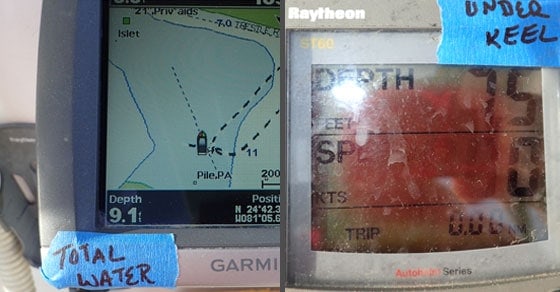

Quickly find anchorages, services, bridges, and more with our topic-focused, easy-to-use waterproof guides. Covering the ICW, Bahamas, Florida, and Chesapeake.
Explore All Guides

Carolyn Shearlock has lived aboard full-time for 17 years, splitting her time between a Tayana 37 monohull and a Gemini 105 catamaran. She’s cruised over 14,000 miles, from Pacific Mexico and Central America to Florida and the Bahamas, gaining firsthand experience with the joys and challenges of life on the water.
Through The Boat Galley, Carolyn has helped thousands of people explore, prepare for, and enjoy life afloat. She shares her expertise as an instructor at Cruisers University, in leading boating publications, and through her bestselling book, The Boat Galley Cookbook. She is passionate about helping others embark on their liveaboard journey—making life on the water simpler, safer, and more enjoyable.
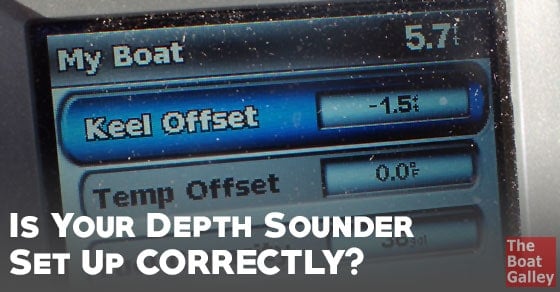


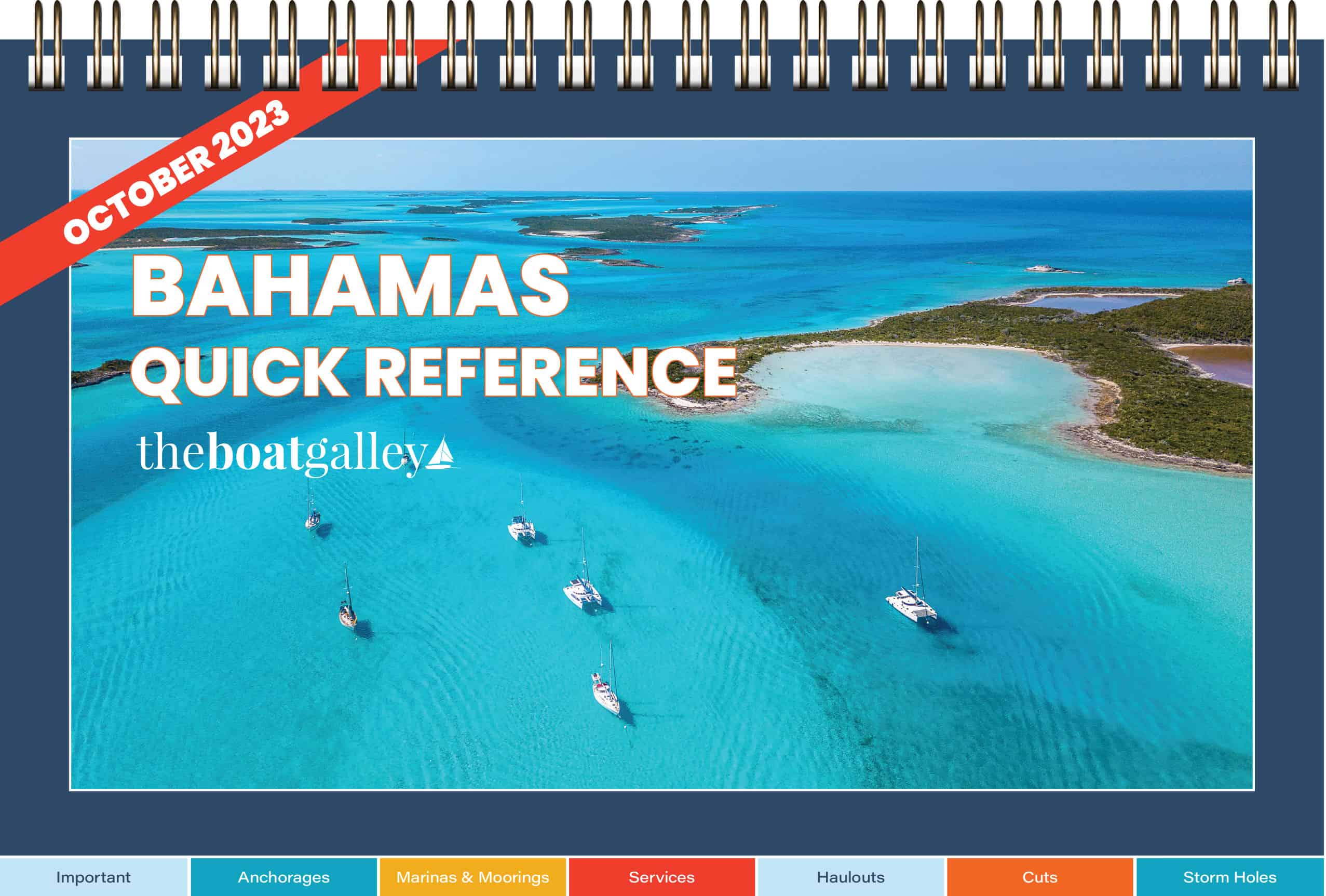
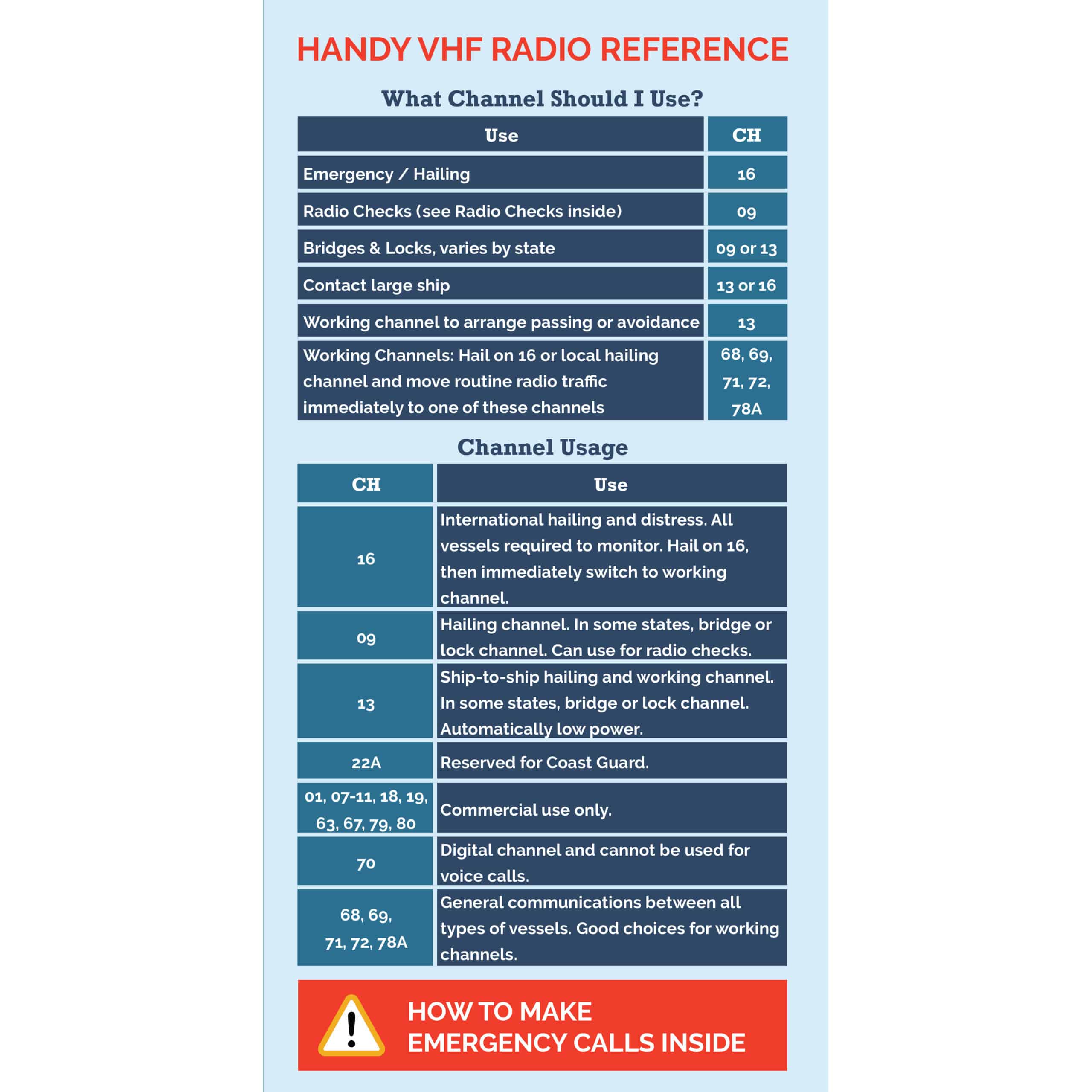





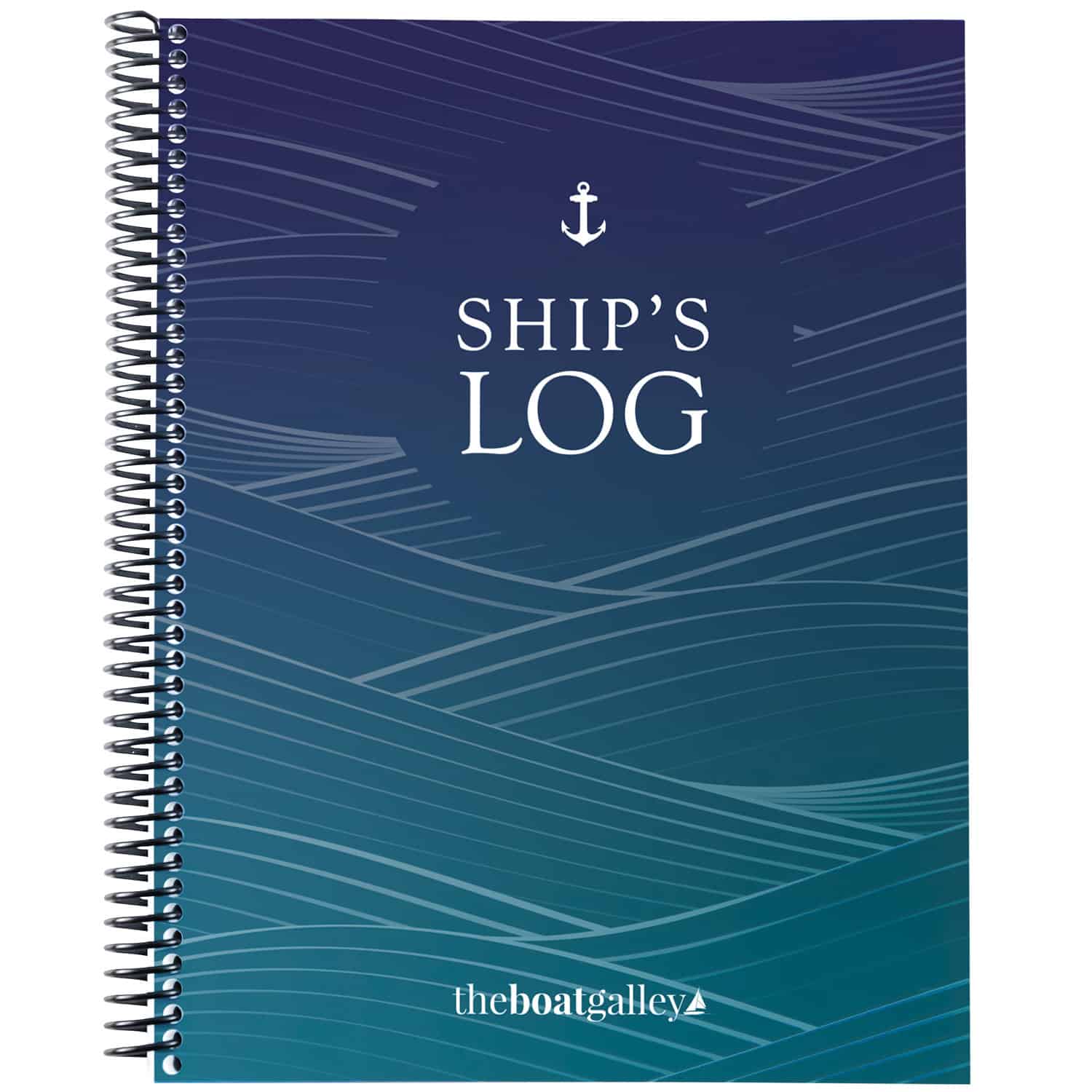
Dave Skolnick (S/V Auspicious) says
Good article.
While I have been known to use a Sharpie on blue tape to label things one of the important tools aboard any boat is a P Touch label maker. Whether making labels for wires and cables or labeling the standard of reference for a depth sounder a good label maker is an inexpensive and helpful aid.
Mine is an awful neon green and blue one. No one will ever steal it. *grin*
Mike Evans says
Interesting article Carolyn – I looked at the offset settings for our sounder when we bought our boat – now 15 years ago – it was and is correct. Something we’ve encountered sailing to and now around Newfoundland are problems with errant readings in very deep water. Our sounder only reads to 500 feet and then shows odd depths – 5, 10, 50 etc in water more than 500 feet deep. I looked into getting a “deep” reading sounder which would be nice navigating off shore banks but the cost and power draw were just too much. Still thinking it would be nice to have if you know of one that would read 0-3000 feet.
Carolyn Shearlock says
We had exactly the same thing in the Sea of Cortez and Pacific coast of Mexico. It was reading the thermoclines as it didn’t have enough power to “punch” through them . . . or at least that was the explanation Raymarine gave us.
Daniel says
When I bought my boat, the depth transducer wasn’t even hooked up. The previous owner likely had it installed and left it, while the housing for the old one was still there. I had to remove the wires from the old one, run the new one and connected it to the depth sounder display. Didn’t seem to work (more testing needed another time). Connected the wire to the GPS and it worked. I guesstimated the settings, but the GPS seemed to read depth just fine.
Good reminder to check the settings next time the boat goes in the water.
David says
Good article. Thank you for reminding us to check our instrument settings.
Les says
Labeling the depth sounder is a great idea. Nothing worse than a guest sailor at the controls becoming unnecessarily alarmed while I am indisposed below.
Julia Weeks says
Really great idea! I’m going to use this method to test our depth sounder once we back in the water. Thanks Carolyn – your articles are always so helpful!
The Boat Galley says
Thanks!
Thom Hounsell says
Thanks. I’m adding this to my to-do list.
Anonymous says
Figured mine out when I grounded!
Anonymous says
They usually don’t worry about asking that question until their draft exceeds the waters depth.
Anonymous says
This topic recently started a lively debate on our new boat. Leave a “cushion” or no?
The Boat Galley says
We round up but don’t really pad it.